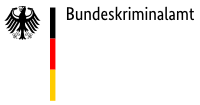
 Microscopic pigment analysis
Microscopic pigment analysis
In one case, a cyclist was struck by a passenger vehicle and severely injured upon impact with the windscreen. The driver of the vehicle fled the scene of the accident. Paint particles recovered from the bicycle were subjected to forensic analysis, which in turn led to the identification of the make and model of the vehicle, the paint colour and the year of manufacture. A successful search resulted in the seizure of the suspect vehicle and the unexpected discovery of narcotics inside the car. The vehicle keeper denied having used the vehicle. Various articles of clothing worn by the keeper were seized. The glass fragments found on the suspect’s trousers were examined and found to exhibit the same physical and chemical properties as the glass in the windscreen.
 Reference samples from the EUCAP car paint collection
Reference samples from the EUCAP car paint collection
Initially a typical case for paint experts, specialists who obtain laboratory findings under extreme time pressure and then compare them with information from EUCAP (European Collection of Automotive Paints), as only rapid search results are truly effective. EUCAP comprises more than 25,000 original paint samples, product information sheets and analytical data on coating materials used by 23 different European and Japanese automobile manufacturers, some of which date back to 1975. EUCAP is a data pool and evaluation tool used in the assessment of vehicles potentially involved in accidents on the basis of comparative paint tests.
 Cross-section of a multi-layer car paint viewed under a light microscope
Cross-section of a multi-layer car paint viewed under a light microscope
Within the framework of close co-operation with Canada and the U.S., access is now available to analytical data on vehicles manufactured in North America, to include 33,000 additional infrared spectra. Some 5,000 new coating systems are added to the EUCAP database every year.
Various light microscopy techniques are used to identify the morphological and visual characteristics of individual layers of paint, including the number of layers, layer thickness and colour and the type, form, size and distribution of pigments and fillers used. Reliable comparison with data from EUCAP is possible only on the basis of the results of individual tests preceded in many cases by time-consuming specimen preparation.
 Heating chamber in which thermal decomposition (pyrolysis) of a sample takes place
Heating chamber in which thermal decomposition (pyrolysis) of a sample takes place
Another method of paint analysis is pyrolysis-GC-MS, which is used primarily for comparative purposes at the KTI. The sample of a layer of paint is pyrolysed at high temperature (approx. 500–800 °C), a process in which the material is broken down into its characteristic components. The components are separated by gas chromatography and identified with the aid of mass spectrometry. This technique is particularly interesting for cross-linked, non-soluble plastics and is thus predestined for use with hardened paints. The advantages of pyrolysis-GC-MS include the small sample size required (µg range) and the simple sample preparation process involving direct pyrolysis of a microsample obtained with a scalpel.
